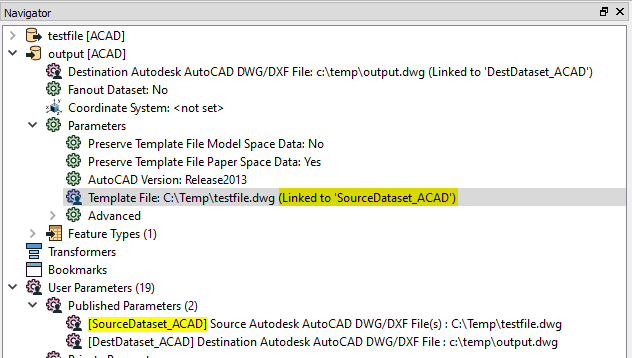Does anyone know if it's possible to write with multiple DWG templates. I've tried making a published parameter and defining the template fil as AutoCadSource but it seems it only applies the first one.
I need each corresponding template to be the original file that I'm reading in because they're all different and have different block names within them.
Thanks!
/Jacob






